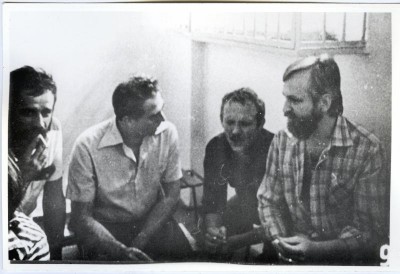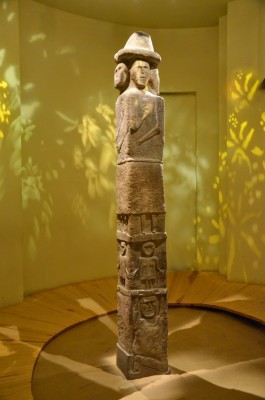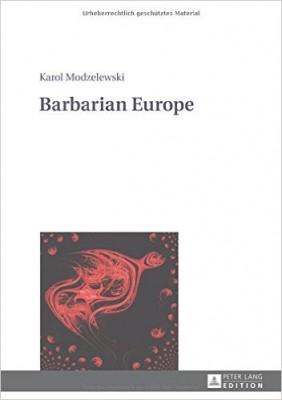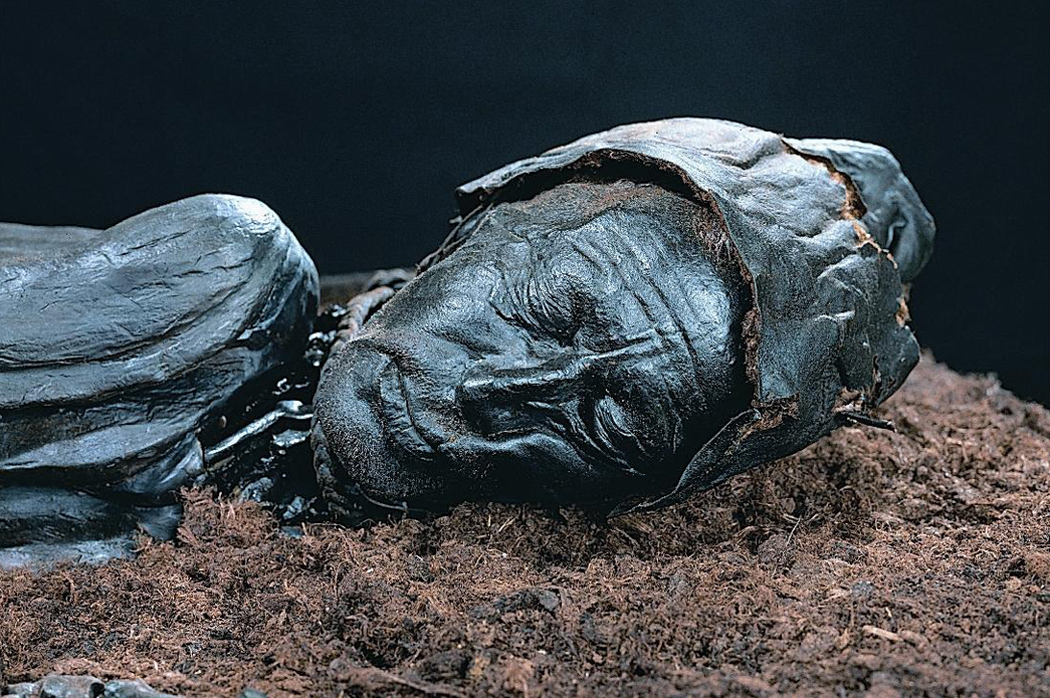Book by Karol Modzelewski about Barbarian Europe tackles the complicated question of what we might know of the Barbarians from the Early Middle Ages. Published in 2004 and translated into French in 2006 it is finally now available in a beautiful and very readable English translation.
Barbarian Europe
By Karol Modzelewski
Translated by Ewa Macura
Editorial work by Elena Rozbicka
Peter Lang 2015 (original edition in Polish 2004)
ISBN 978-3-631-64980-0

Karol Cyril Moszelewski was the lovechild of a union between a Russian soldier (later deported) and a Polish literary historian. In 1939 she entered into a relationship with a Polish communist, Zygmunt Modzelewski, who adopted the small boy, who grew up in USSR where his father played an important political role as Polish ambassador before and during WW2. Later the father served as member of the Polish Communist Party’s Central Committee and took part in the communist government In Poland post WW2.
It was not until 1945 Karol Modzelewski began to learn Polish. In his youth he studied Medieval History at the University of Warsaw and until 1964 he worked as a professor there and in Breslau. He was also a card-carrying member of the Polish Communist Party. However, in 1964 he wrote together with Jacek Kurón an “Open Letter to the Party” criticising the politics of the party. For this he was jailed for three years. Another three and a half years were spent in prison after 1968. Later he was active in the foundation of the Solidarity movement, whose name during the strikes in 1980 was his invention. For this, he was once more interned. Later, in 1989 -91, he served as a member of the Polish Senate for the Social-Democratic party, Unia Pracy.
Barbarian Europe
During all these upheavals in his life, he obviously found some solace in his deep immersion into the chronicles, barbarian laws and other sources pertaining to the early Middle Ages, and more specifically what might be gleaned about the culture of the Barbarians, termed by him: the Barbarian Collectivism. The result of this long-life preoccupation with the history of the Early Middle Ages bore fruit in 2004, when a book, titled “Barbarzyńska Europa” was published in Warsaw. Translated into French in 2006 (L’Europe des barbares: Germains et slaves face aux héritiers de Rome, Aubier, Paris 2006), it has now been translated into English. Based on a very close reading of the written sources it audaciously outlines the contributions of the Scandinavian, German, Slav and Russian imprint on the history of Europe.
This is an immensely important book, which should be read not only by historians but also European Politicians. Not only does it introduce the reader to the different kinds of sources available, but it also resurrects a few (Tacitus), which has been heavily maligned by Western European historians bent on claiming that we cannot in fact say anything worthwhile about the barbarians apart from the history of how the Romans and later the Christians viewed them (bête noire: Walter Goffart). Yes, we can, writes Karol Modzelewski, and proceeds audaciously to outline the elements of the social and cultural characteristics of their world.
Barbarian Collectivism

This is not the place to recapitulate the arguments. Any reader will soon discover that each page is filled with minuscule insights of utmost importance and this cannot be summed up in a few poignant lines. Listing the chapters, though, gives an inkling of the importance of the laws of the Barbarians and their evidence for a society constructed around kinship communities, neighbours, tribes, assemblies, cults and kings. The argument is that these societies were indeed based upon the ideas of associations, whose members (heads of households and clans) were in principle invested with equal rights to take part in and voice their opinion in the assemblies. It was this world, which in principle was dismantled by the Roman Catholic Church and its harbingers, the Byzantines, the Carolingians, the Ottonians etc.
However, the story does not end here: even today anthropologists will claim there is a rift through Europe, where two different forms of basic social organisations dominate. Up North and East we have the world of “associations”, where members are in principle “equal” and “in unison”. Anyone, who does not agree, will typically be either excommunicated from the association or walk away to found a new association (for instance Danes are famous for being members of on average ten associations – workers unions, local churches, sports associations etc.) This is even today summed up in the dictum that “here we do not count “wealth but heads” (“ikke høveder men hoveder”). To this should be added the way in which the success of any leader (who is always elected) is measured in his (or more seldom hers) ability to unite the other members (to make them agree in unison). Much more may be said on this, but it is a fact that the outline of the barbaric world which Modzelewski presents us with, carries an odd echo of what is in fact even today basic elements of Scandinavian, German and Slavic Culture.
He does not spend much ink on outlining the opposite world: The Southern European (Roman) world. But for the sake of understanding the character of the Northern World a few remarks are pertinent. In Southern Europe the basic cellule is of course not the association, but the alliance, where equality is not the dominant principle; rather the stress is laid on “difference”, which permeates any social situation. Part of this is perpetuated through gift-giving (gifts to bolster status and secure networks). When “Transparency International” measures corruption and finds that Denmark is the least corrupt nation in the world, while South Eastern Europe is permeated with corruption, it is a reflection of this. In a world dominated by associations, you do not give gifts, your “serve and help”, which the transparency International Index does not measure (because it is immaterial). The fact is however, that the only way to get a job in Denmark is to be “related to someone”. In Southern Europe you bring a gift! Both practices are formally recognized as corrupt.
Thus we are back to the basic element of what Modzelewski, calls the basic social institution in Barbaric collectivism, the kindred or clan.
Future for Europe
 All this is perhaps not spelled as directly out in the book as I have sketched it here. The main aim is to write about the social structure of Early Medieval Barbarian Europe. But the book is obviously also written with a couple of agendas. One is to stress the fact that Modern Europe is so much more than the result of the Roman and Byzantine legacy. In fact it is a construct built on the need to encompass both the “Romans” and the “Barbarians”. To be an anthropologist and to view the crisis, which has been unfolding in the relationship between Germany and Greece is thus also to acknowledge that two different ways of organizing societies have been clashing: One, where unity and transparency is valued above all, and another, where the right to continue to be “Greeks bearing gifts” has been felt at stake. Understanding the deep historical roots of such modern cultural chasms, has obviously been on the agenda of Modzelewski.
All this is perhaps not spelled as directly out in the book as I have sketched it here. The main aim is to write about the social structure of Early Medieval Barbarian Europe. But the book is obviously also written with a couple of agendas. One is to stress the fact that Modern Europe is so much more than the result of the Roman and Byzantine legacy. In fact it is a construct built on the need to encompass both the “Romans” and the “Barbarians”. To be an anthropologist and to view the crisis, which has been unfolding in the relationship between Germany and Greece is thus also to acknowledge that two different ways of organizing societies have been clashing: One, where unity and transparency is valued above all, and another, where the right to continue to be “Greeks bearing gifts” has been felt at stake. Understanding the deep historical roots of such modern cultural chasms, has obviously been on the agenda of Modzelewski.
Part of his aim has finally also been to make a stand for the teaching of history as a deeply important occupation worthy of lavish care in terms of funding and veneration. As Modzelewski ends: “Contrary to Fukuyama’s claims, history has not ended at all”.
We might add: Anyone wrongfully believing that the history of the Early Middle Ages is not pertinent for understanding who we are, where we come from and where we are going should hastily be sentenced to three weeks of immense joy while reading this outrageously important book.
PS: Minor quibbles about such things as his use of the codified editions of the Barbarian laws as edited inside the German historiographical tradition, as opposed to the more modern approach, where the diversity of the many manuscripts is being stressed, might be mentioned; or the lack of familiarity with the archaeological evidence, which ought in the best of worlds to have been considered together with the unpacking of the main argument of the thesis of Modzelewski. However, this does not really subtract from the importance of the book. Rather, it opens up vistas for young and bright scholars.
Karen Schousboe
FEATURED PHOTO:
The Man from Tollund is a barbarian, who was hanged to death in the 4th -2nd centuries BC and interred in a bog. It is believed he represents an individual condemned, hanged and sacrificed to the gods as Tacitus wrote about: Among other things Tacitus wrote: “They hang traitors and renegades in trees, cowards (yellow), combat evaders (afraid to go to war) and unnaturally immoral people they lower into filthy swamps and cover them with branches”. Another account written down by Tacitus describes how a Germanic tribe, the Semnonans (from the northern part of Germany), sacrificed human beings. Tacitus’ Germania is one of the sources, which Karol Modzelewski “resurrects” from its fate as “Roman Spin”. Source: Silkeborg Museum. The Tollund Man was chosen to feature on the cover of the original Polish edition of the book.
